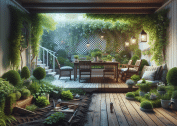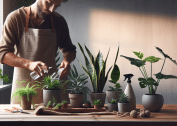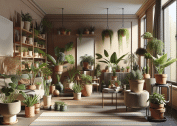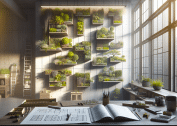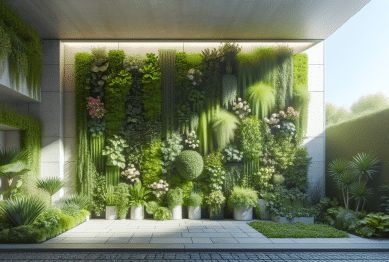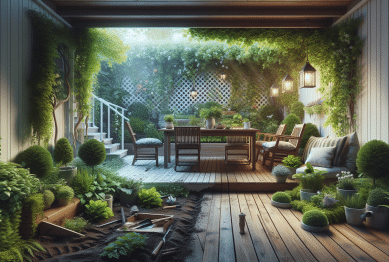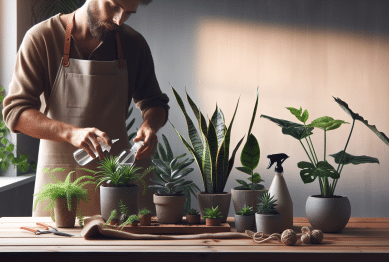Discover how thriving indoor plants can transform your home environment, boost well-being, and purify the air. This guide uncovers the essentials of plant care, natural light, watering routines, and common pitfalls, helping create a lush, inviting space with indoor greenery.
Choosing the Right Indoor Plants for Your Home
Bringing plants inside is a practical way to enhance both style and health in a home. Selecting varieties well-suited to the available conditions—such as light and humidity—means less struggle for both plant and owner. For beginners, snake plants and pothos tend to withstand irregular care and limited light, making them excellent entry points in indoor plant care. Matching plant characteristics to specific rooms ensures longevity and reduces disappointment, while boosting the aesthetics of your indoor space.
Pet owners often find joy in adding greenery, but some species can be harmful to furry friends. Peace lilies and philodendrons, for example, contain compounds that can upset a curious cat or dog’s digestive system. Instead, explore safer alternatives like spider plants, Boston ferns, or prayer plants, which offer vibrant foliage without the risk. Creating a pet-friendly plant list enhances the harmony between plants and the rest of the household while keeping everyone safe.
Those maximizing smaller living spaces may consider plants that double as air purifiers. Certain houseplants, such as rubber plants and dracaena, have been recognized for removing environmental toxins from indoor air, according to research from NASA (https://ntrs.nasa.gov/citations/19930073077). This dual benefit—ornamental value plus cleaner air—makes houseplants an attractive solution for apartments and urban environments where outdoor air quality can fluctuate.
Understanding Indoor Lighting and Placement
The quality of light inside a room directly shapes the fate of most houseplants. While many leafy friends label themselves as “low-light,” most still benefit from periods of bright, indirect sunshine. Natural light can fluctuate with the seasons, but placing plants near east- or north-facing windows ensures consistency. Sheer curtains help soften strong midday rays, preventing leaf burn yet allowing photosynthesis to flourish. Observing where the sun naturally falls is an enjoyable process—for both grower and greenery.
Worried about rooms with little sunlight? Supplemental LED grow lights are a game-changer, providing energy for photosynthesis even in windowless spaces. Compact and energy-efficient, these lamps mimic natural sunlight spectra and can be tailored to fit shelves or desks. Some modern fixtures offer timers and variable brightness, bringing customizable growth environments into apartments and offices. This flexibility enables urban dwellers to cultivate thriving pothos, ferns, or even orchids far from traditional garden plots.
Rotating plants periodically keeps their growth balanced and prevents stems from leaning awkwardly toward their light source. This simple habit encourages even growth and enhances the overall visual harmony of an indoor plant display. For tall, trailing, or climbing species, consider using supports like moss poles or netting to guide upward expansion. Balancing aesthetics and plant well-being brings a rewarding completeness to the home gardening experience.
Watering Routines and Common Mistakes
Watering is often the most misunderstood aspect of plant care, with too much or too little water both capable of causing damage. Most houseplants thrive on consistent, moderate moisture, rather than daily soaking. The key is to check the top inch of soil—if it feels dry, it might be time for a drink. For cacti and succulents, wait until the potting mix dries out completely. Providing just enough water to moisten the roots, without allowing them to sit in soggy soil, leads to stronger plants and fewer issues.
Using pots with adequate drainage holes can make a dramatic difference, as they prevent accidental overwatering and root rot. Trapped water in decorative containers might harm roots by fostering fungus or bacteria. Placing small stones or a mesh screen at the base of a pot boosts drainage efficiency, improving the environment for plant roots. A simple bottom-up watering method—immersing the pot briefly in water—can also encourage deep root systems, especially for thirsty species like ferns.
Environmental changes such as seasonal shifts or central heating can alter water needs over time. During winter, many indoor plants slow their growth, requiring less frequent watering, while summertime might call for more attention and moisture. Monitoring leaves for subtle signs—wilting, brown tips, or yellowing—offers clues to a plant’s needs. Consistency is key, and adapting your routine based on plant feedback helps foster healthy, resilient foliage throughout the year.
Soil, Potting, and Fertilization Insights
The right potting soil gives plants a nutrient-dense, aerated home for their roots. Store-bought indoor mixes typically contain peat, perlite, and compost—ingredients optimized for moisture control and easy oxygen flow. For specific plant groups like succulents or orchids, specialty blends prevent waterlogging and mimic native habitats. Refresh potting soil every year or two, as it can become compacted and lose nutrients over time, reducing a plant’s vigor.
Root-bound plants often stall in both size and health, showing roots emerging from drainage holes or circling the pot surface. Repotting to a container one or two inches larger allows them to stretch out and access more resources. This process is best done during the growing season, when plants bounce back quickly from the disruption. Taking the time to loosen tangled roots before repotting helps new shoots and leaves appear, giving instant visual improvement.
Fertilizer acts like a multivitamin for houseplants, especially if natural light is limited or the soil is older. A balanced, all-purpose liquid or slow-release formula provides nutrients without overwhelming roots. Over-fertilization is a common mistake, leading to salt buildup or leaf burn. Following product guidelines and flushing the soil with water occasionally keeps nutrient levels optimal. A little care with plant food ensures lush foliage—without risking common houseplant ailments.
Recognizing and Preventing Common Houseplant Problems
Indoor plants, although resilient, face challenges from pests like spider mites, fungus gnats, and mealybugs. Regularly inspecting leaf undersides, stems, and soil surfaces helps provide early warning of these unwelcome visitors. Preventive strategies include isolating new plants before allowing them to join existing collections, and keeping foliage dry during watering to limit fungal threats. A sudden change in appearance should prompt a closer look for insects, sticky residues, or webbing.
Natural controls—such as neem oil, insecticidal soap, or a strong shower—are often effective in managing outbreaks without introducing harsh chemicals. Maintaining airflow around plant foliage and avoiding overcrowding reduces the risk of spreading disease or insect infestations. When needed, removing affected leaves or trimming back very dense growth can limit damage and support recovery. Consistency in plant care acts as a natural defense, making pests less likely to take hold.
Yellowing, browning, or dropping leaves may signal stress from lighting, watering, or nutrient imbalances. If pests are not seen, evaluate recent changes in care routines or environment. Subtly adjusting the placement, water amount, or adding a diluted fertilizer can often reverse these symptoms. Houseplants communicate through visual cues, and responding thoughtfully leads to thriving greenery that rewards every effort made. The result is a peaceful, beautiful indoor sanctuary.
Benefits of Indoor Plants Beyond Beauty
Indoor gardening yields surprising advantages for both mind and body. Studies suggest exposure to greenery can reduce stress, boost mood, and even improve focus for children and adults alike. Having plants work quietly in the background, filtering airborne pollutants and releasing oxygen, raises indoor air quality and cultivates calm. Many people find tending to indoor plants meditative, with the satisfying rituals of watering and pruning offering daily moments of connection.
Work-from-home offices stand to benefit the most. Positioning a few leafy companions on desks or shelves can lower feelings of fatigue and increase productivity, according to some research (https://www.ncbi.nlm.nih.gov/pmc/articles/PMC4419447/). Additionally, houseplants can gently regulate ambient humidity in dry environments, providing a more comfortable climate. This dual role—as both decor and wellness tool—highlights the unmatched versatility of living greenery.
Children and pets can learn valuable lessons from observing and caring for plants. Responsibility, patience, and curiosity grow alongside their leafy charges. Watching a seed become a mature plant is magical, helping instill respect for the environment and appreciation for nature’s processes. In the end, a home filled with plants is more than a design statement—it is a living, growing ecosystem that supports everyone under its roof.
References
1. Wolverton, B. C., Johnson, A., & Bounds, K. (1989). Interior Landscape Plants for Indoor Air Pollution Abatement. NASA. Retrieved from https://ntrs.nasa.gov/citations/19930073077
2. National Institutes of Health. (2015). Psychological benefits of indoor plants in workplaces. Retrieved from https://www.ncbi.nlm.nih.gov/pmc/articles/PMC4419447/
3. American Society for the Prevention of Cruelty to Animals. (n.d.). Toxic and Non-Toxic Plant List. Retrieved from https://www.aspca.org/pet-care/animal-poison-control/toxic-and-non-toxic-plants
4. The University of Vermont Extension. (2021). Care of Indoor Plants. Retrieved from https://www.uvm.edu/extension/mastergardener/care-indoor-plants
5. Penn State Extension. (2020). Growing Houseplants Indoors. Retrieved from https://extension.psu.edu/growing-houseplants-indoors
6. Royal Horticultural Society. (n.d.). Common Houseplant Problems. Retrieved from https://www.rhs.org.uk/advice/profile?pid=130



